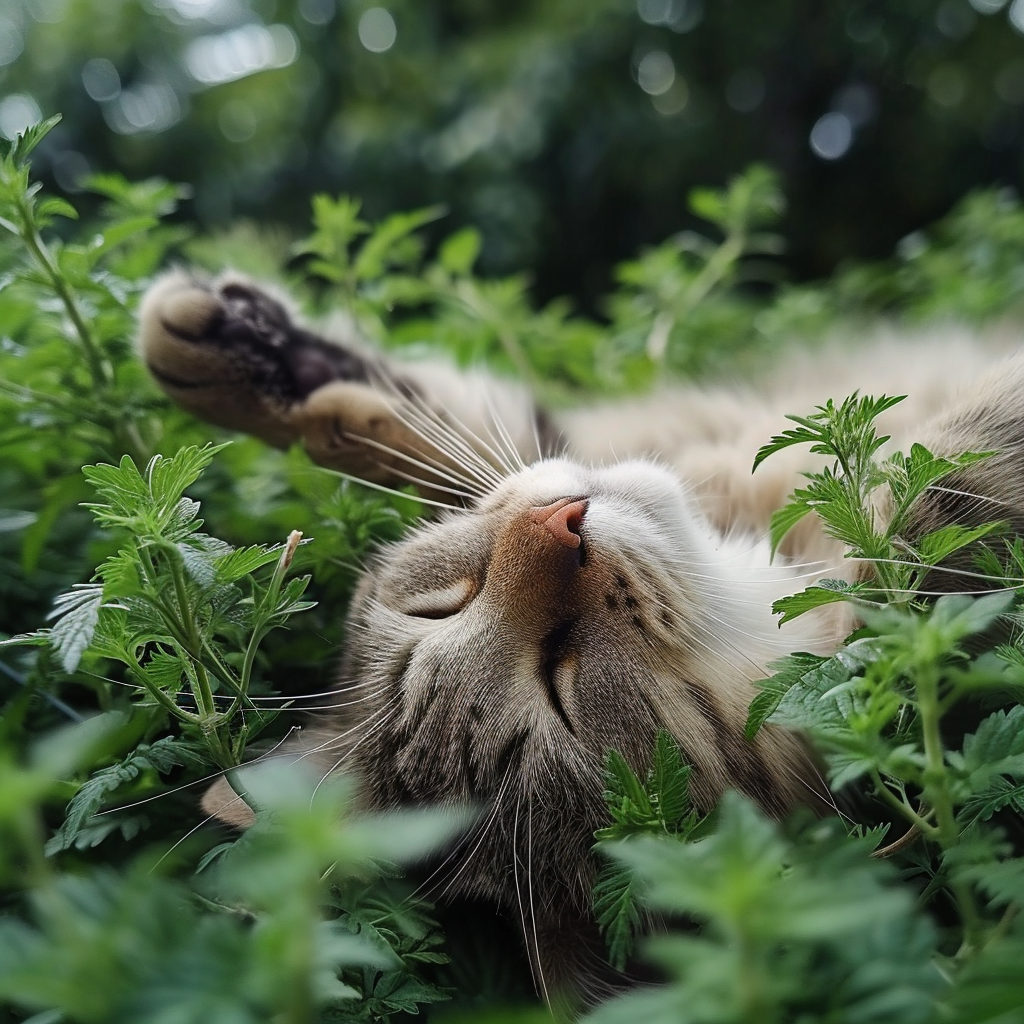
The Magical World of Catnip: Why Your Feline Friend Can't Get Enough
Share
Have you ever sprinkled a bit of catnip on your cat’s favorite toy only to see them transform into a purring, playful ball of fur? If you have, you’re not alone! Catnip has been captivating our feline friends for centuries, turning even the most stoic of cats into frisky, joyful creatures. But what is it about this humble herb that drives cats wild? Let’s dive into the magical world of catnip and uncover why your kitty can’t get enough of it.
What is Catnip?
Catnip, scientifically known as *Nepeta cataria*, is a member of the mint family. It’s a perennial herb that’s native to Europe and Asia but has spread across the globe, delighting cats wherever it grows. The magic ingredient in catnip is a compound called nepetalactone, which is found in the plant’s leaves and stems.The Science Behind the Magic
When your cat sniffs or ingests catnip, nepetalactone binds to receptors inside their nose, stimulating sensory neurons that lead to the brain. This process triggers a cascade of effects, resulting in behaviors that can range from hyperactivity to blissful relaxation. Essentially, nepetalactone mimics feline pheromones, which explains why cats find it so irresistible.
A Tale of Two Reactions
Not all cats respond to catnip in the same way. In fact, approximately 30% to 50% of cats lack the genetic trait that makes them sensitive to catnip. For those that do respond, the effects can be divided into two main categories: active and passive.
1. **Active Responders**: These cats will exhibit a burst of energy, rolling, flipping, and racing around the room. They might bat at invisible prey or engage in playful wrestling with their toys.
2. **Passive Responders**: These felines experience a more mellow high. They might lounge around, purr contentedly, and exhibit a serene, relaxed demeanor.
The effects of catnip are usually short-lived, lasting about 10 to 15 minutes before your cat returns to their normal self. Interestingly, after the effects wear off, it can take up to a couple of hours for your cat to become susceptible to catnip’s charms again.
Why Do Cats Love It?
The reasons behind a cat’s love for catnip aren’t fully understood, but several theories exist. One popular theory is that catnip triggers a euphoric response similar to how certain substances affect humans. This “high” can be immensely enjoyable for cats, providing them with a sense of pleasure and relaxation.
Another theory suggests that catnip might mimic natural pheromones, providing cats with a sense of comfort and familiarity. This could explain why some cats become very affectionate after exposure to catnip, seeking out their favorite humans for a cuddle session.
Safe Fun for Felines
Catnip is completely safe for cats, and there’s no risk of overdose. However, it’s still a good idea to moderate their exposure. Too much catnip can lead to mild gastrointestinal upset in some cats, although this is rare.
You can offer catnip in various forms: dried leaves, sprays, or catnip-infused toys. Each form can provide a different type of experience, so feel free to experiment and see which your cat prefers. Remember, the quality of the catnip matters—fresher, organic catnip often has a stronger effect due to higher nepetalactone content.
Growing Your Own
If you’re a green thumb, consider growing your own catnip. It’s easy to cultivate and can be grown both indoors and outdoors. Having a fresh supply ensures that your feline friend always has access to the highest quality catnip, and it can be a fun project for you as well.
Catnip is more than just a treat; it’s a magical experience for your cat that brings joy, playfulness, and relaxation. Watching your feline friend enjoy their catnip is one of the simple pleasures of being a cat owner, and it’s a great way to enhance your bond with your pet. So next time you pull out that little bag of green, know that you’re about to give your kitty a moment of pure bliss. Enjoy the show!

